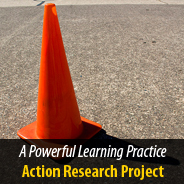Forest Hills Elementary Schools
Team Members: Julie Thorp, Lisa Courtney, Marie Mehring, Linda Lagemann, Lauren Wiethorn, Annette Thomas,Ann Hambleton
Community: Dublin-Dallas Year 1, 2010-2011
As we enter the ever changing world of 21st century learning, we believe that it is essential for our students to have the tools necessary to be safe, effective, and respectful digital citizens. As a team we have researched and created a curriculum for grades 1-6 using the acronym, SMART:
Safety first
My creation or give credit
Awareness of accuracy
Responsible postings
Traceable footprint
At each grade level we have accumulated lessons and support material that will allow educators to empower their students with these essential tools.
What do learners need to know at various ages in order to successfully use technological tools in a productive, respectful and safe manner?
Essential Understanding:
- Students will understand that when using technology, they need to be safe, responsible and effective contributors.
- Essential Questions:
- What is digital citizenship?
- Why is it important?
- What is your digital footprint?
- How can you create a digital footprint that reflects you in a positive way?
Students will know…
- A digital footprint is the word used to describe the trail, or “footprints”, that people leave online.
- A digital footprint is everything we do online which should represent who we are, and what we stand for and we must have the knowledge that this representation will stick with us potentially forever.
- The information you share is often public
- How to share information, what to share, and with whom to share
- Some sources/resources on the internet are not valid or legitimate
- How to correctly document and use resources for learning
- Difference between appropriate and inappropriate information
- Students will be: SMART
Students will be able to..
- Exhibit a positive attitude toward using technology that supports collaboration, learning and productivity
- Respond appropriately to inappropriate information on the internet
- Use technology to locate, evaluate and collect information from a variety of sources
- Determine whether a source is valid and reliable
- Practice safe, legal and responsible use of information
- Create, research and communicate with effective tools
- Communicate information and ideas effectively to multiple audiences
Read more about the team’s methods of assessments and download assessment tools for this curriculum by visiting their team wiki page.
As a committee, our future plans is to continue to share our Action Research with the FHSD in order to assist our curriculum department in the planning and implementation of a future Digital Citizenship Curriculum.
To determine student growth throughout the course of the school year, each student will complete a primary or intermediate pre/post assessment. The pre-assessment will be used to determine their current understanding of Digital Citizenship based off of the SMART acronym. The results of the baseline data will be used by teachers to implement, and tailor, instruction in order to effectively teach the Digital Citizenship curriculum throughout the year.
In addition, the students will work individually, or within a group, to complete a culminating project showcasing what they have learned at each grade level. The students will have the opportunity to select a project idea from either the Primary Digital Citizenship Choice Board.docx or Intermediate Digital Citizenship Choice Board.docx. The students will be evaluated on their ability to demonstrated understanding of the five components of the Digital Citizenship curriculum (SMART). Educators will be able to document evidence on the “Being a S.M.A.R.T. Digital Citizen” SMART Learning Checklist.docx.
Each year, the pre/post assessment, along with evidence of the culminating project will be placed in an individual “Digital Citizenship Portfolio”.
At the end of 3rd and 6th grade, the students will use the assessments within their portfolios to complete a reflection highlighting their growth.
Evaluation Tools:
Primary Digital Citizenship Choice Board.docx
Intermediate Digital Citizenship Choice Board.docx
SMART Learning Checklist.docx
The team’s wiki page is loaded with links and resources for download. Visit their wiki page
here!
About Action Research Projects
Action research is a process in which Powerful Learning Team members collaboratively examine their own educational practice systematically and carefully. Action research is:
- Disciplined inquiry into a problem or possibility within the school or classroom
- Collaborative and usually takes place in a community of practice
- Meaningful, positive, and reflective
- Data-driven, action-based, improvement-focused
- Transformative
View all Action Research
The following two tabs change content below.

Sheryl is the co-founder and Chief Executive Officer of Powerful Learning Practice. She works with schools and districts from around the world helping them to infuse technology into their curriculums and by leading other digital conversion efforts.
Sheryl also consults with governments, educational organizations and non-profits in development of their various professional learning initiatives.
Sheryl is a sought-after presenter at national and international events, speaking on topics related to digital and online learning, teacher and educational leadership, online community building, and other educational issues impacting children of poverty.
Sheryl served on the International Society for Technology in Education (ISTE) Board of Directors for six years. She co-authored The Connected Educator: Learning and Leading in a Digital Age with Lani Ritter Hall. Sheryl has four children and four grandsons, Luke, Logan, Levi and Tanner and a trio of dachshunds. You can find out more on her blog and on Twitter @snbeach.



Trackbacks/Pingbacks